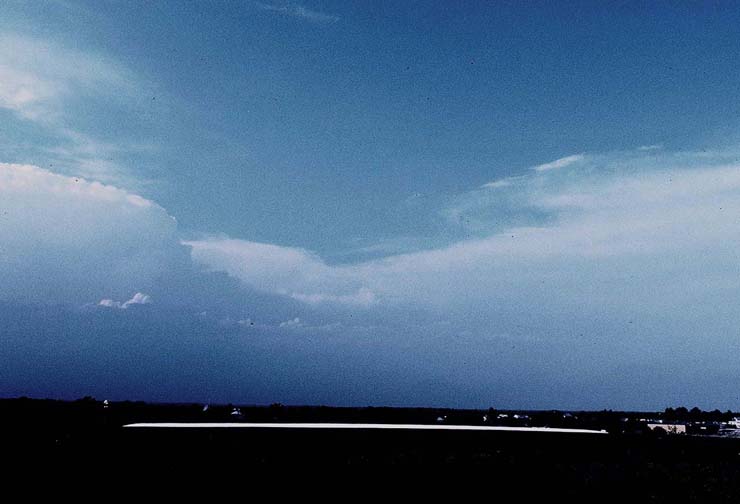

Monarch
1986
Artpark, Lewiston, N.Y. 600-foot knoll oriented along an east/west axis near the Niagara River; one hundred tons of pea-size anthracite coal; white marble concrete, fine wire steel mesh re-enforcement and the title "Monarch".
The three hundred-foot crest of a six hundred-foot long knoll was re-contoured to present a shallow crown and then covered with coal. Centered on the top of the hill over the coal along its axis, a 100´ by 25´ by 1´ thick, continuous shell of pure white concrete is troweled parallel the contour of the crown.
Approaching from the south side, the shallow curve of the edge of the concrete is first seen cresting against the sky as a solitary white stripe and then, as juxtaposed to and in contrast with the distant, remarkably level horizon (a result, I am told, of this area having been a lake 50 million years ago).
By positioning this fragile convex concrete rectangle here on a crust of coal and earth, above an old chemical-waste dump site, and orienting it geographically, I meant to present a form, perhaps analogous to a fragment of the globe itself, an anchored, aging fragment in association with the ephemeral, colorful, uniquely mobile monarch butterfly, along with the an allusion to hill-top commands. White marble reference here has a certain absolute quality, simple, unblemished, ceremonial, and seemingly timeless. The coal simply acknowledges a history of human labor while evening the knoll and covering the wounds of our reshaping.
Another factor which acts in counterpoint and as something of a post-script which is not initially visible but is invited to assert itself as aging fractures its brittle surface.
After winter freezes and thaws, five differently reinforced, broad, diagonal bands will appear as seen from the air, as they fracture at different rates. The better reinforced stay light longer while the two adjacent minimally-re-enforced bands will fracture and darken first briefly presenting as a rectangular field of "black and white" diagonals.
Approaching from the south side, the shallow curve of the edge of the concrete is first seen cresting against the sky as a solitary white stripe and then, as juxtaposed to and in contrast with the distant, remarkably level horizon (a result, I am told, of this area having been a lake 50 million years ago).
By positioning this fragile convex concrete rectangle here on a crust of coal and earth, above an old chemical-waste dump site, and orienting it geographically, I meant to present a form, perhaps analogous to a fragment of the globe itself, an anchored, aging fragment in association with the ephemeral, colorful, uniquely mobile monarch butterfly, along with the an allusion to hill-top commands. White marble reference here has a certain absolute quality, simple, unblemished, ceremonial, and seemingly timeless. The coal simply acknowledges a history of human labor while evening the knoll and covering the wounds of our reshaping.
Another factor which acts in counterpoint and as something of a post-script which is not initially visible but is invited to assert itself as aging fractures its brittle surface.
After winter freezes and thaws, five differently reinforced, broad, diagonal bands will appear as seen from the air, as they fracture at different rates. The better reinforced stay light longer while the two adjacent minimally-re-enforced bands will fracture and darken first briefly presenting as a rectangular field of "black and white" diagonals.